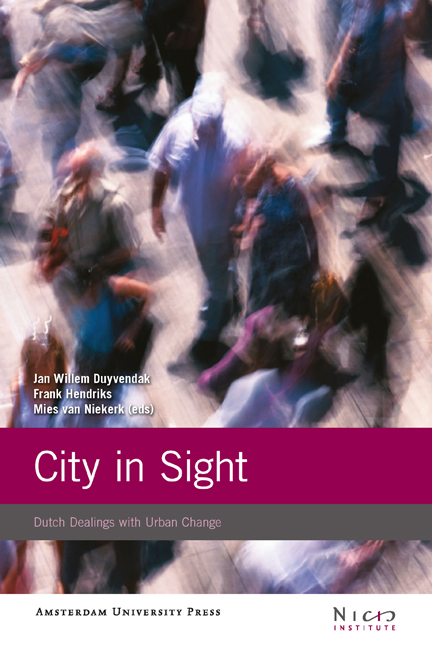Book contents
- Frontmatter
- Contents
- Acknowledgements
- Cities in Sight, Inside Cities: An Introduction 9
- Part I Urban Transformations and Local Settings
- Part II Urban Citizenship and Civic Life
- Part III Urban Governance and Professional Politics
- The Dutch Orange and the Big Apple: A Comparative Commentary
- References
- Notes on Contributors
- Index
12 - Explaining the Role of Civic Organizations in Neighborhood Co-production
Published online by Cambridge University Press: 19 January 2021
- Frontmatter
- Contents
- Acknowledgements
- Cities in Sight, Inside Cities: An Introduction 9
- Part I Urban Transformations and Local Settings
- Part II Urban Citizenship and Civic Life
- Part III Urban Governance and Professional Politics
- The Dutch Orange and the Big Apple: A Comparative Commentary
- References
- Notes on Contributors
- Index
Summary
Introduction
The active involvement of neighborhood residents in their neighborhood, and their participation in neighborhood improvement programs are important issues for policy-makers and scholars. If we understand the conditions under which neighborhood residents can be motivated to become actively involved in their neighborhood, this may help to create public order at the local level (Sampson 2005). Policymakers invite individual residents to ventilate their ideas on how to improve the quality of the neighborhood, and indeed have funding available for these activities. For example, a recent inventory of ideas from residents in Hoograven (Utrecht) resulted in thirteen small and easy to implement improvements of the neighborhood (such as flag poles at the shopping centre, better surveillance of parking in public green, periodical removal of litter from the park).
The focus of much of the current research into ‘participatory action’ is on conditions at the individual, citizen level. Most research aims to explain the involvement of individual citizens in their neighborhoods, and the participation of individual citizens in local policy processes (such as citizen initiatives, neighborhood councils, and local referenda). For example, the social capital and neighborhood attachment of citizens affects their involvement in formal programs for neighborhood improvement (Dekker 2007) or urban restructuring (Van Marissing 2008). By contrast, other research – in particular the governance literature – focuses on conditions at the neighborhood level. These studies describe networks of co-operation within neighborhoods between the local government, housing corporations, and other organizations. For example, Keil (2006) shows in Dortmundt-Nordstadt (Germany) how long-established, dense networks between organizations involved in urban development is important for successful cooperation.
Between the levels of the individual citizen and neighborhood governance a broad set of civic organizations is active. These civic organizations are the focus of the present chapter. Civic organizations are here defined as non-profit or non-public organizations, such as: football clubs, residents’ organizations, tenants’ organizations, primary schools, social work organizations, or housing corporations. Surprisingly, we do not have much knowledge about these organizations, their composition, their activities, and their mutual cooperation. Although the levels of the individual citizen and the neighborhood-level governance networks are often linked through the activities of these civic organizations, we know little about their coproduction with (quasi)governmental organizations in the neighborhood.
- Type
- Chapter
- Information
- City in SightDutch Dealings with Urban Change, pp. 223 - 248Publisher: Amsterdam University PressPrint publication year: 2009



